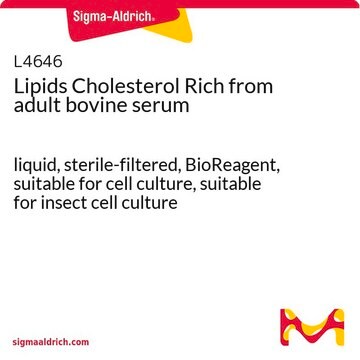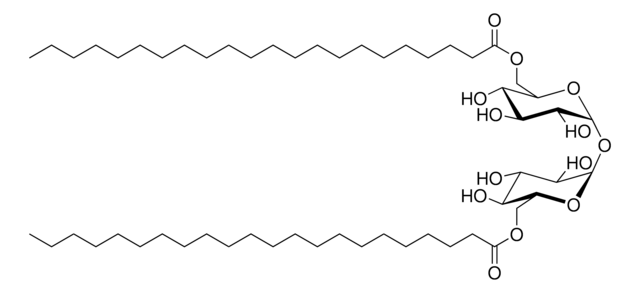RAB0540
Human FGF19 / Fibroblast Growth Factor 19 ELISA Kit
for serum, plasma, cell culture supernatants and urine
About This Item
Prodotti consigliati
Reattività contro le specie
human
Confezionamento
kit of 96 wells (12 strips x 8 wells)
tecniche
ELISA: suitable
input
sample type urine
sample type plasma
sample type cell culture supernatant(s)
sample type serum
assay range
inter-assay cv: <10%
intra-assay cv: <12%
sensitivity: 30 pg/mL
Metodo di rivelazione
colorimetric
Condizioni di spedizione
wet ice
Temperatura di conservazione
−20°C
Informazioni sul gene
human ... FGF19(9965)
Descrizione generale
Applicazioni
Please refer to the attached General ELISA KIT Procedure (sandwich, competitive & Indirect ELISA)
Azioni biochim/fisiol
Altre note
Please type the word sample in the text box provided for lot number.
I componenti del kit sono disponibili anche separatamente
Avvertenze
Warning
Indicazioni di pericolo
Consigli di prudenza
Classi di pericolo
Met. Corr. 1
Codice della classe di stoccaggio
8A - Combustible corrosive hazardous materials
Punto d’infiammabilità (°F)
Not applicable
Punto d’infiammabilità (°C)
Not applicable
Certificati d'analisi (COA)
Cerca il Certificati d'analisi (COA) digitando il numero di lotto/batch corrispondente. I numeri di lotto o di batch sono stampati sull'etichetta dei prodotti dopo la parola ‘Lotto’ o ‘Batch’.
Possiedi già questo prodotto?
I documenti relativi ai prodotti acquistati recentemente sono disponibili nell’Archivio dei documenti.
Il team dei nostri ricercatori vanta grande esperienza in tutte le aree della ricerca quali Life Science, scienza dei materiali, sintesi chimica, cromatografia, discipline analitiche, ecc..
Contatta l'Assistenza Tecnica.









